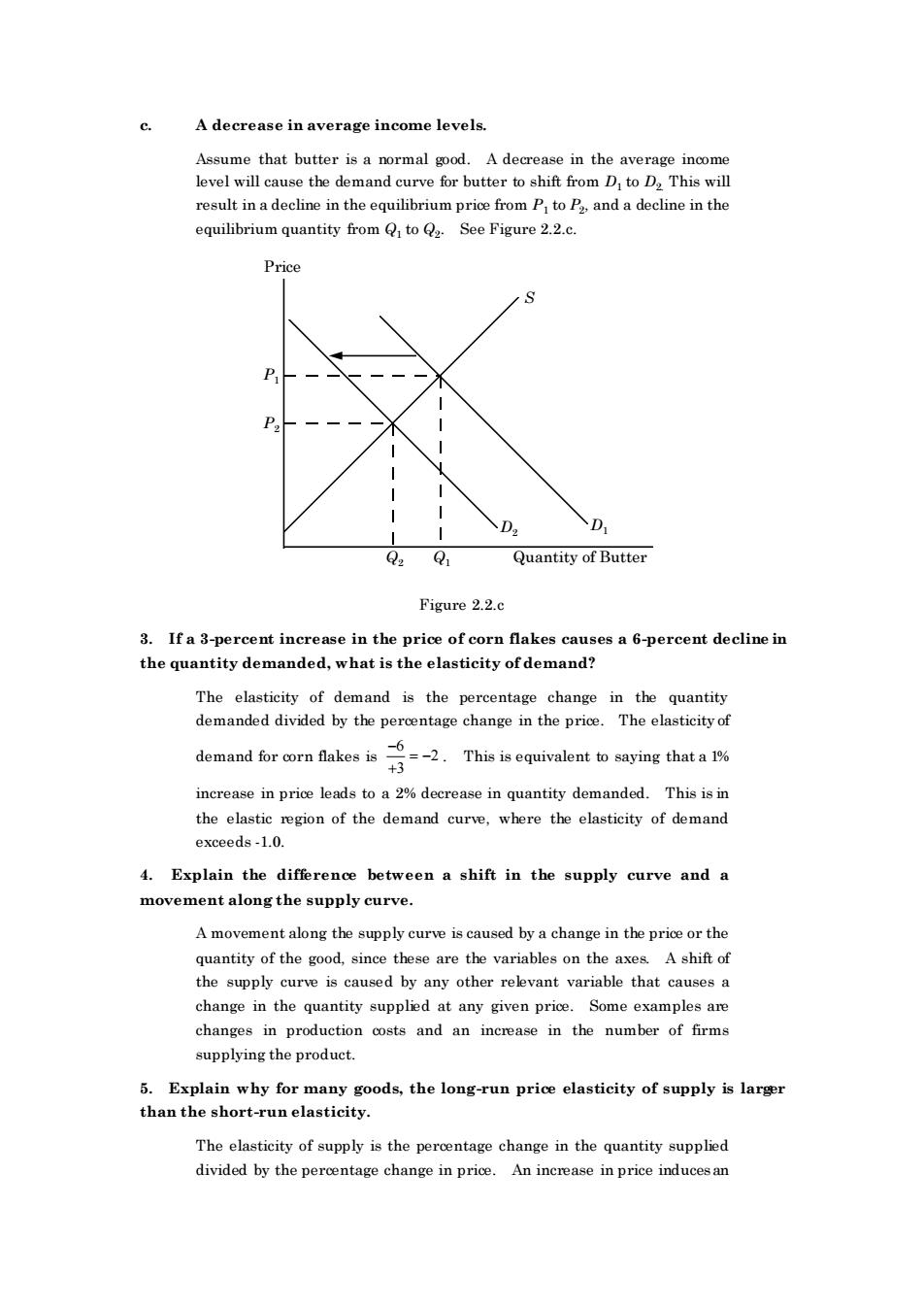正在加载图片...

c. A decrease in average income levels. Assume that butter is a normal good.A decrease in the average income level will cause the demand curve for butter to shift from D,to D,This will result in a decline in the equilibrium rice from P toP and a decline in the quantity from,toSee Figure Price D Q。Q1 Quantity of Butter Figure2.2.c 3.If a 3-percent increase in the price of corn flakes causes a 6-percent decline in the quantity demanded,what is the elasticity of demand? The elasticity of demand is the percentage change in the quantity demanded divided by the percentage change in the price.The elasticity of demand or ake:色芳-2.Tsa6 valentn that increase in price leads toa%decrease in quantity demanded.This is i the elastic exceeds-1.0. 4.Explain the difference between a shift in the supply curve and a movement along the supply curve. A movement along the supply curve is caused by a change in the price or the quantity of the good,since these are the variables on the axes.A shift of the supply curv is caused by any other relvant variable that causes a change in the quantity supplied at any given price. Some examples ar changes in production costs and an increase in the number of firms supplying the product. 5.Explain why for many goods,the long-run price elasticity of supply is larger than the short-run elasticity. The elasticity of supply is the percentage change in the quantity supplied divided by the percentage change in price. An increase in price inducesan c. A decrease in average income levels. Assume that butter is a normal good. A decrease in the average income level will cause the demand curve for butter to shift from D1 to D2. This will result in a decline in the equilibrium price from P1 to P2 , and a decline in the equilibrium quantity from Q1 to Q2 . See Figure 2.2.c. D1 P1 P2 S Price Q Quantity of Butter Q2 1 D2 Figure 2.2.c 3. If a 3-percent increase in the price of corn flakes causes a 6-percent decline in the quantity demanded, what is the elasticity of demand? The elasticity of demand is the percentage change in the quantity demanded divided by the percentage change in the price. The elasticity of demand for corn flakes is − + = − 6 3 2 . This is equivalent to saying that a 1% increase in price leads to a 2% decrease in quantity demanded. This is in the elastic region of the demand curve, where the elasticity of demand exceeds -1.0. 4. Explain the difference between a shift in the supply curve and a movement along the supply curve. A movement along the supply curve is caused by a change in the price or the quantity of the good, since these are the variables on the axes. A shift of the supply curve is caused by any other relevant variable that causes a change in the quantity supplied at any given price. Some examples are changes in production costs and an increase in the number of firms supplying the product. 5. Explain why for many goods, the long-run price elasticity of supply is larger than the short-run elasticity. The elasticity of supply is the percentage change in the quantity supplied divided by the percentage change in price. An increase in price induces an